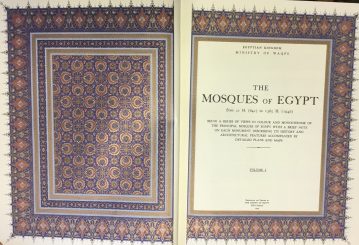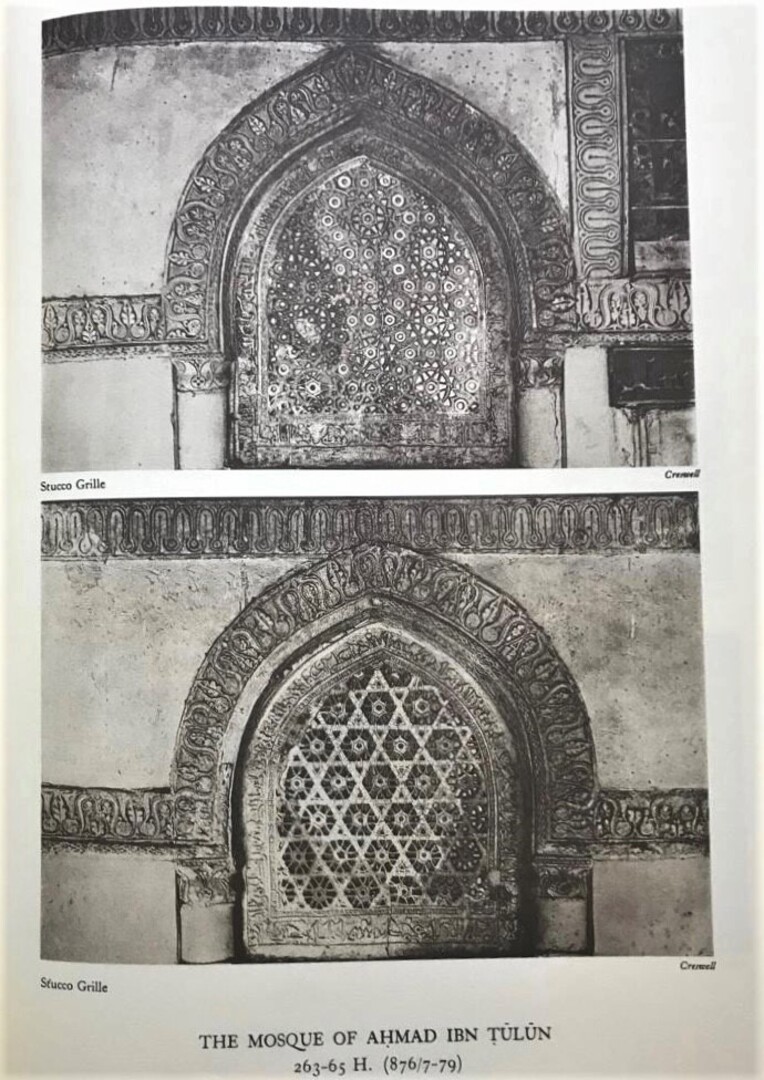The Mosques of Egypt from 21 H (641) to 1365 H (1946). Being a Series of Views in Colour and Monochrome of The Principal Mosques of Egypt with a Brief Note on Each Monument Describing its History and Architectural Features Accompanied by Detailed Maps and Plans. TWO VOLUMES.
Creswell, Keppel Archibald Cameron.
Book ID: 18640
ISBN: 1874371016
Large Folio. Volume I: [6, introduction by Dr Kamal Ismail, index and preface by K.A.C. Creswell], 68 pp., [1 glossary], 93 b/w & chromolithograph plates, + 13 pp independent index dated 1951 with 2 large folding maps in rear pocket showing Islamic monuments in Cairo giving their location on the maps / Volume II: [2 index], 69-141 pp., [1 glossary], plates 94-243 b/w & chromolithograph, publisher’s gilt embossed leather cloth, set in mint condition. No slip case. Limited to 1200 copies of which this set is numbered 609. Three mosques built since 1949 have been added on pages 134-141 and plates 206A to 206G; so in full it contains 243 plates showing mosques with architectural and decorative details (27 in colour): 216 in photogravure with sepia ink, 2 in photogravure with chromolithographed colour, 3 chromolithographs, and 22 in halftone offset lithography after paintings by Al-Husain Fawzy. Further with about 100 offset lithographic line illustrations on the integral leaves (many full-page), decorative endpapers Islamic designs, numerous figures & designs, plans in text, half-titles, religious dedication (Bismillah al-Rahman al-Rahim), chromolithograph frontispieces & title pages with chromolithograph borders, reproduced and printed by The Survey of Egypt, Giza, 1949. Hazar Publishing, London, second edition, 1992.
Synopsis
Creswell published this work first in Arabic in Cairo under the auspices of the Egyptian Ministry of Pious Endowments… He considered it “the finest piece of book production achieved in Egypt”. A short introduction is written in this edition by Dr. Kamal Ismail, one of the experts who worked with Creswell during the preparation of this work. This survey covers 65 mosques and other Islamic monuments of Egypt, arranged chronologically from 641 to 1946, with a final section on ornamental details, such as woodwork, window-grilles, and marble floors.
A highly important academic study especially after a considerable number of mosques were either destroyed or badly damaged in the earthquake of 1955. It is a key record of both what does and does not survive today.








